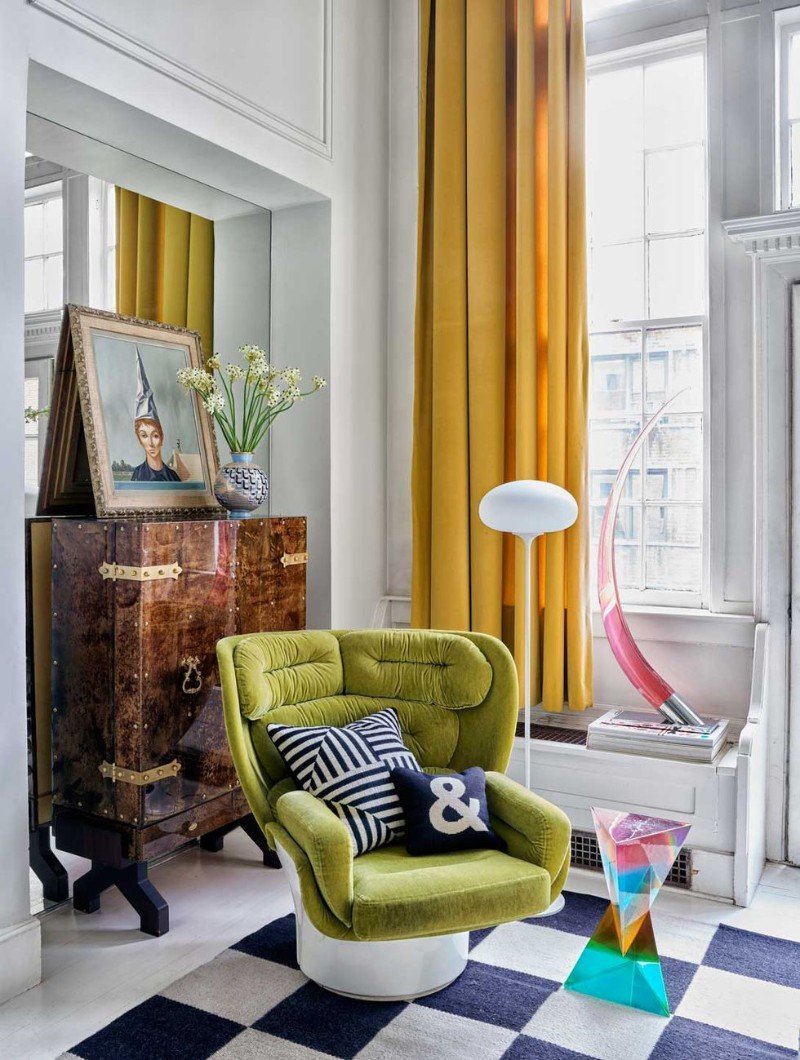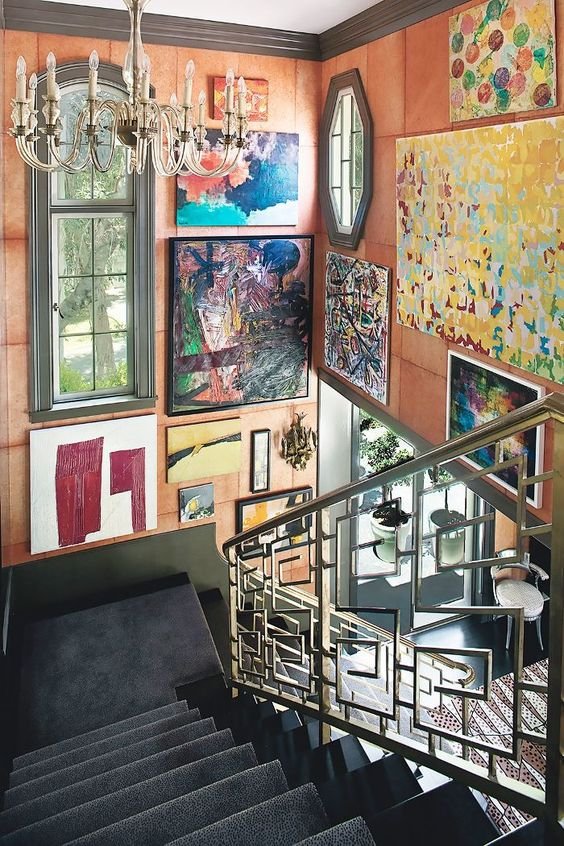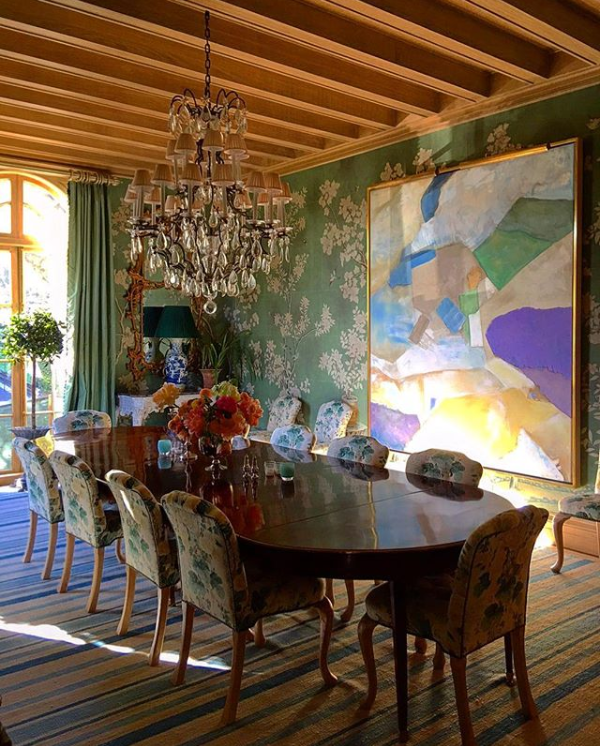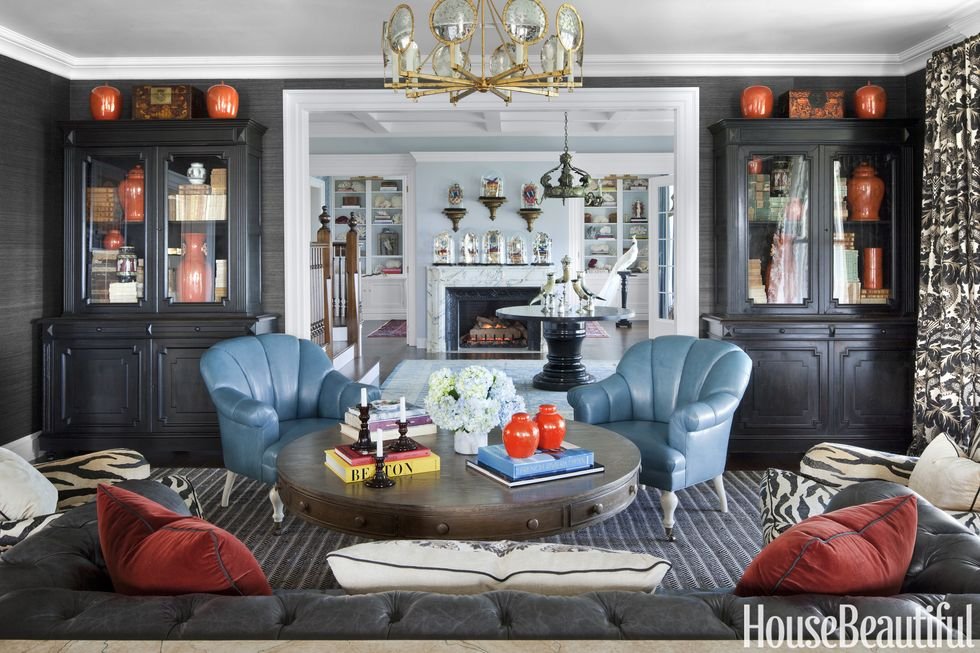Am I a Maximal (Gasp) Minimalist?
You know that moment when you realize you share traits with someone you weren't quite on board with? Picture that snooty coworker who, despite their airs, confesses their love for the movie "Fear" with Reese Witherspoon—a film that shaped your teenage dating life and left you with an enduring, albeit irrational, crush on Marky Mark. Suddenly, they're not so snooty. In fact, they're kind of... cool, yet charmingly susceptible to bad taste.
Well, that's how I felt when I discovered I was a maximal minimalist... or was it minimal maximalist? Ah, the struggle with labels. I've always taken minimalism with a grain of salt. Sure, it's nice to pretend to be all controlled and clean, but let's be real—who are we kidding? Minimalists don't seem to appreciate the weirdo paintings, colors, or fun stuff that makes my heart sing.
But then again, I can't fully align with my maximalist counterparts, who seem to be unable to stop at just one vase for their tabletop. Not to be too harsh on our maximalist friends, but sometimes, doesn't maximalism teeter on the edge of hoarding? Sure, there are inspiring maximalist designs out there, but they often feel like "more is more" at any cost, lacking the eleganza I crave.
I kinduv feel like this song:
How do I know that I am a minimal maximalist?
But what exactly is a maximal minimalist, and how do you know if you're one? Well, let's break it down.
At its core, a maximal minimalist embraces the principles of minimalism—simplicity, functionality, and a clutter-free environment. They appreciate clean lines, uncluttered spaces, and a pared-down aesthetic that promotes calm and tranquility.
However, where the maximal minimalist diverges from traditional minimalism is in their approach to adding personality and character to their space. Instead of sticking to a strictly neutral color palette and sparse furnishings, they're not afraid to inject bold pops of color, eclectic patterns, and eye-catching accessories into their design scheme.
So, what are the key factors in determining if you're a maximalist minimalist? Here are a few telltale signs to look out for:
You appreciate clean lines and uncluttered spaces but also crave warmth and personality in your home.
You're not afraid to mix and match different styles, textures, and patterns to create a dynamic and visually stimulating environment.
You prioritize functionality and practicality in your design choices but also value aesthetics and visual interest.
You're drawn to a neutral color palette but enjoy adding bold accents and statement pieces to create contrast and drama.
You believe that less is more but also recognize that sometimes, more is more—especially when it comes to expressing your unique style and personality.
Ultimately, being a maximal minimalist is all about striking a balance between simplicity and vibrancy, functionality and personality. It's about creating a space that feels calm and inviting yet still reflects your individuality and creativity.
Okay, I guess I am one! Now what?
Practicing maximal minimalism in interior design is all about achieving a balance between simplicity and vibrancy, functionality and personality. Here are some key principles to keep in mind:
Start with a Neutral Base: Begin by creating a clean, neutral foundation for your space. Opt for light-colored walls, minimalist furniture with clean lines, and simple, unadorned surfaces. This sets the stage for the maximalist elements you'll be adding later.
Incorporate Bold Accents: Once you have your neutral base in place, it's time to introduce bold accents and statement pieces. Choose a few key items—whether it's a vibrant area rug, a bold piece of artwork, or a statement piece of furniture—that add personality and visual interest to the space.
Mix and Match Styles: Embrace eclecticism by mixing and matching different styles, textures, and patterns. Don't be afraid to combine modern and vintage elements, sleek finishes with rustic textures, or geometric patterns with organic shapes. The key is to create a harmonious balance that feels cohesive yet dynamic.
Play with Color and Pattern: Experiment with color and pattern to add depth and dimension to your space. Incorporate vibrant hues, rich jewel tones, and eye-catching patterns to create visual interest and draw the eye. Consider using accent walls, bold textiles, and statement accessories to add pops of color and pattern throughout the room.
Curate Thoughtfully: Despite the maximalist approach, it's important to curate your space thoughtfully to avoid overwhelming the senses. Select each item with care, considering its visual impact, functionality, and how it contributes to the overall aesthetic of the room. Edit and refine as needed to maintain balance and harmony.
Embrace Negative Space: Even in a maximalist space, negative space plays an important role in creating balance and visual clarity. Allow areas of the room to breathe by leaving empty space around furniture and decor, and avoid overcrowding or cluttering the space with too many objects.
Focus on Quality Over Quantity: While maximal minimalism allows for a more layered and eclectic approach to design, it's important to prioritize quality over quantity. Invest in well-made, timeless pieces that will stand the test of time and bring joy to your space for years to come.
By practicing maximalist minimalism in your interior design, you can create a space that feels dynamic, inviting, and uniquely expressive of your personal style. Embrace the freedom to mix and match, experiment with bold accents, and create a space that truly reflects who you are.
Other Maximal Minimalists
While the concept of maximalist minimalism may not be explicitly tied to specific designers or stylists, there are several prominent figures in the world of interior design who incorporate elements of both minimalism and maximalism into their work. Here are a few notable names:
Kelly Wearstler: Renowned for her bold and eclectic style, Kelly Wearstler is known for creating luxurious and dynamic interiors that blend elements of maximalism with clean lines and modern minimalism. Her designs often feature vibrant colors, bold patterns, and unexpected juxtapositions of materials and textures.
Jonathan Adler: With his playful and irreverent approach to design, Jonathan Adler is another designer who seamlessly blends minimalism with maximalism. His interiors often feature sleek and streamlined furniture paired with bold accents, quirky accessories, and eye-catching artwork, creating spaces that are both stylish and eclectic.
Miles Redd: Known for his glamorous and eclectic style, Miles Redd is a master of mixing high and low, old and new to create maximalist spaces that are both sophisticated and inviting. His interiors often feature bold colors, luxurious materials, and unexpected combinations of patterns and textures.
Martyn Lawrence Bullard: Martyn Lawrence Bullard is celebrated for his eclectic and globally inspired interiors that seamlessly blend elements of minimalism with maximalism. His designs often feature a mix of vintage and contemporary furnishings, bold patterns, and luxurious finishes, creating spaces that feel both curated and effortless.
Nate Berkus: Nate Berkus is known for his approachable and livable interiors that strike a balance between minimalism and maximalism. His designs often feature clean lines, neutral palettes, and understated elegance, balanced by bold accents, layered textures, and personal touches that add warmth and personality to the space.
While these designers may not exclusively identify as maximalist minimalists, their work demonstrates a thoughtful integration of both minimalist and maximalist principles, resulting in interiors that are dynamic, expressive, and uniquely individual.
So how about it? Are you officially a maximal minimalist?
Maximally yours,
If you’re like me, you’ve had it up to here with those snooze-inducing showrooms that are more "museum" than "home". I'm flipping the script on home styling, and let me tell you, there won't be any rulebooks or tedious style history lessons involved. Just pure creativity.
Why do I rebel against the ordinary? For seven years, I meticulously crafted and refurbished homes solely for their resale value. I dwelled in a universe of beige, grey, black, and white. But in 2020, I reached my limit and gleefully abandoned all that for a fantastical realm of vibrant colors and delightful oddities. Dive deeper into my journey right here. 🌈🤹♂️🏡
My work and advice has been showcased in prestigious publications such as Architectural Digest, Better Homes and Gardens, The Zoe Report, Real Homes, and Homes & Gardens, among others.
I know that I'm not everyone's cup of tea, but then again, neither are you…









